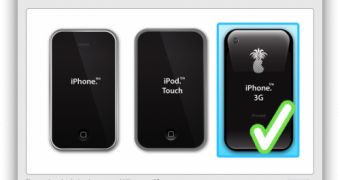Jailbreak fans become restless following even the smallest of iPhone firmware updates. Jailbreak-focused forums are now teeming with details on the ways you can, or cannot achieve the desired results on all iPhone / iPod touch models. We took a look at some of the most important aspects regarding the jailbreak phenomenon for firmware 2.2.1 and summed them up in the lines to follow. Have a look.
Pretty much everyone wants to keep their previously available apps, themes, etc. intact. On a Mac, users can grab PwnageTool and disable the baseband update to conserve their baseband. For the rest of the backup, users must put AptBackup to work, for their Cydia apps and iTunes library. A bit of information on that wretched baseband, as disclosed by the famous iPhone Dev Team, can be found below.
The 'baseband’ is the generic name given to the internal components of the iPhone that handle the phone calls and Internet access. This ‘baseband’ is a tiny and unique independent computer system that runs inside your iPhone, it is separate to the main system that handles the applications (such as email and google maps) and it talks to the main part of the phone over an internal communications network. Think of it like a cable modem or other peripheral that is attached to your home PC that needs occasional updates. When a software update is released and presented to you within iTunes the baseband is sometimes updated (to fix bugs or add new features). The 2.2.1 update for the iPhone 3G contains such an update, so running the vanilla updater straight away with iTunes will reprogram and update the baseband. This could be bad for certain people, depending on your ultimate aim.
Now, to preserve the baseband on an iPhone 3G, for instance, users must create a custom .ipsw with PwnageTool. This custom .ipsw will not contain the baseband update but will still include the patches delivered with firmware 2.2.1. This works if you have a locked iPhone 3G and you wish to update to 2.2.1 but preserve the iPhone’s current baseband. Preserving the baseband software will ensure that you can still use “yellowsn0w,” the iPhone 3G unlock application, to jailbreak in the future. PwnageTool (Mac only) seems to be the best tool+manual to get the job done, as it contains intuitive graphics and comprehensive prompts.
Another demand, where the user only wishes to jailbreak, not to unlock too, is also widespread. If an iPhone owner is using his / her iPhone with one carrier and has no interest in the possibility of an iPhone 3G unlock in the near future, they must simply restore or upgrade to 2.2.1 using iTunes and use QuickPwn to Jailbreak and add Cydia and Installer.
For iPhone 2G (1st Generation) owners, it's even easier. They simply need to update / restore their device with iTunes, then run QuickPwn. That's it!
On the touch side (1G - original iPod touch) the same steps apply – update to 2.2.1 with iTunes and run QuickPwn.
Unfortunately for iPod touch 2G owners, there is no 2.2.1 as of yet. Nevertheless, the iPhone dev team is working on a tool called Redsn0w for owners of this particular device.
Lastly, a widely encountered issue with OS X jailbreaks is DFU mode on 10.5.6. It was previously noted that Mac OS X 10.5.6 introduced a bug that affected the use of DFU mode. While there are several methods to work around this issue, there is another method that can be used to easily restore functionality. The iPhone Dev Team knows everything about it.
Softpedia doesn't condone jailbreaking / unlocking the iPhone / iPod touch or any other device. Using hacks may render your device unusable, or may considerably reduce the quality of your experience using the respective device. This article has a purely informational purpose and doesn't, in any way, suggest that readers should go forth with downloading and using PwnageTool, QuickPWN or Yellowns0w. If you choose to download and install the jailbreak tools, you will do so at your own risk. Unlocking / Jailbreaking your iPhone may violate your warranty or the EULA with Apple and/or your cellular service provider.

 14 DAY TRIAL //
14 DAY TRIAL //